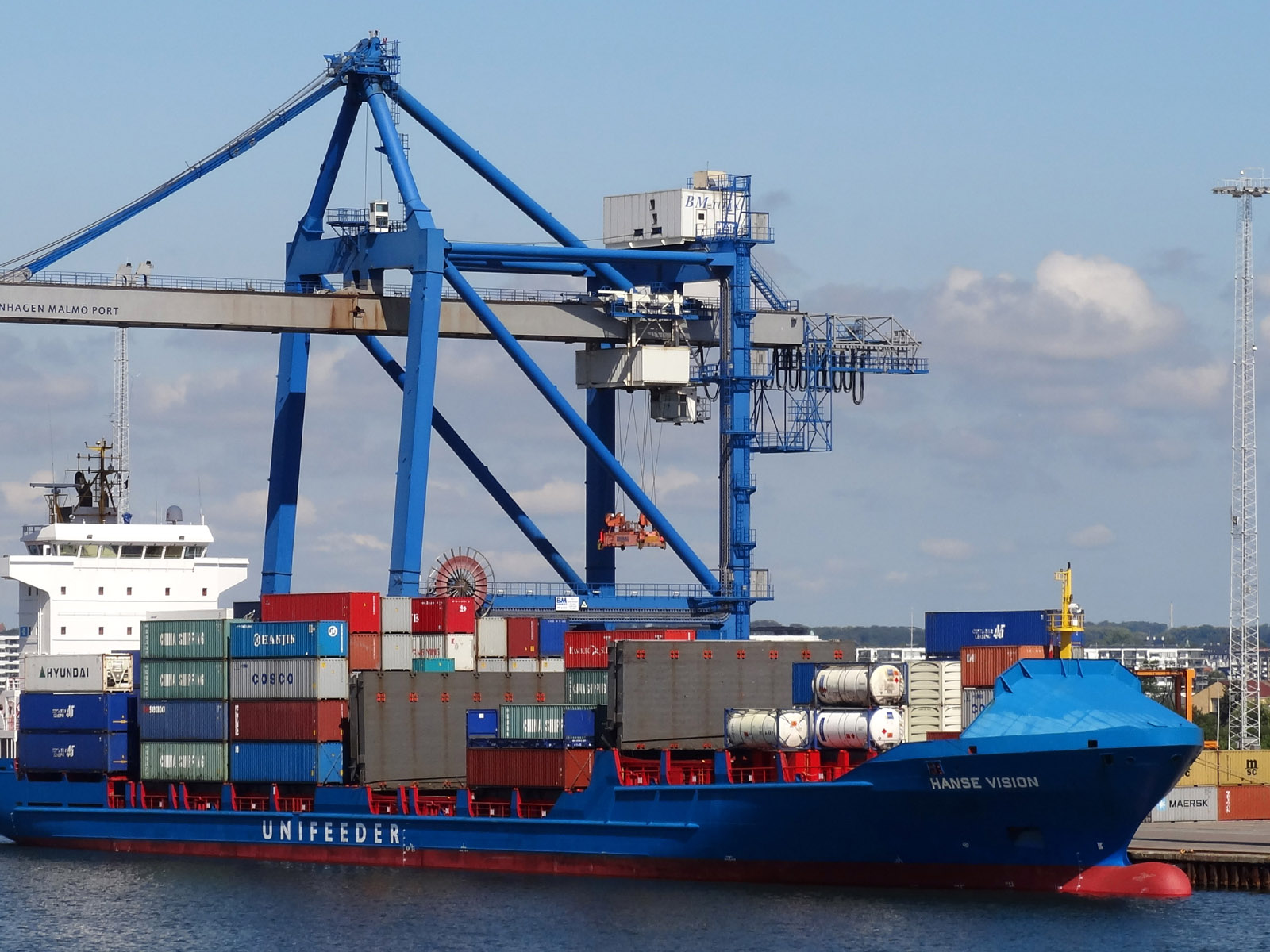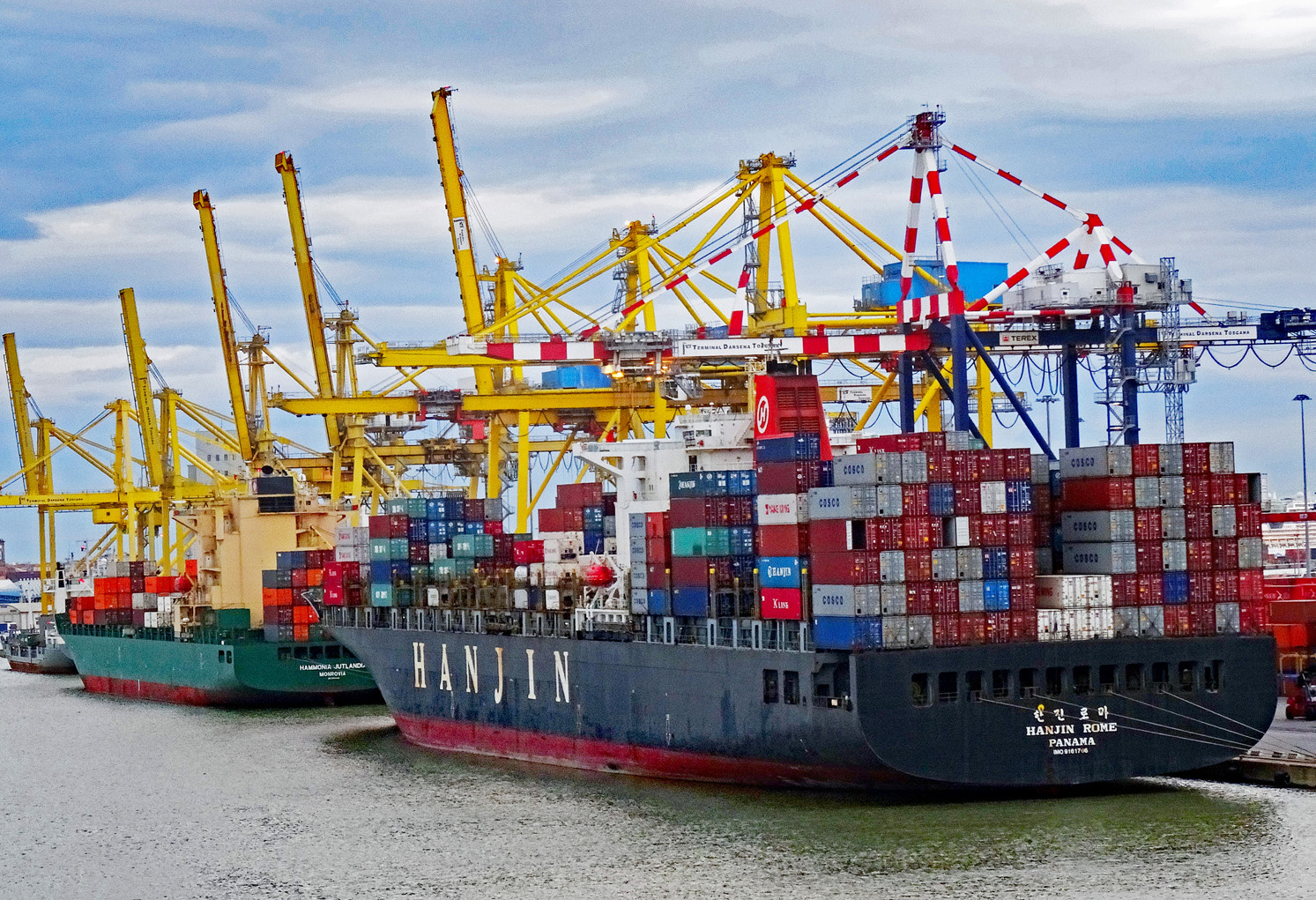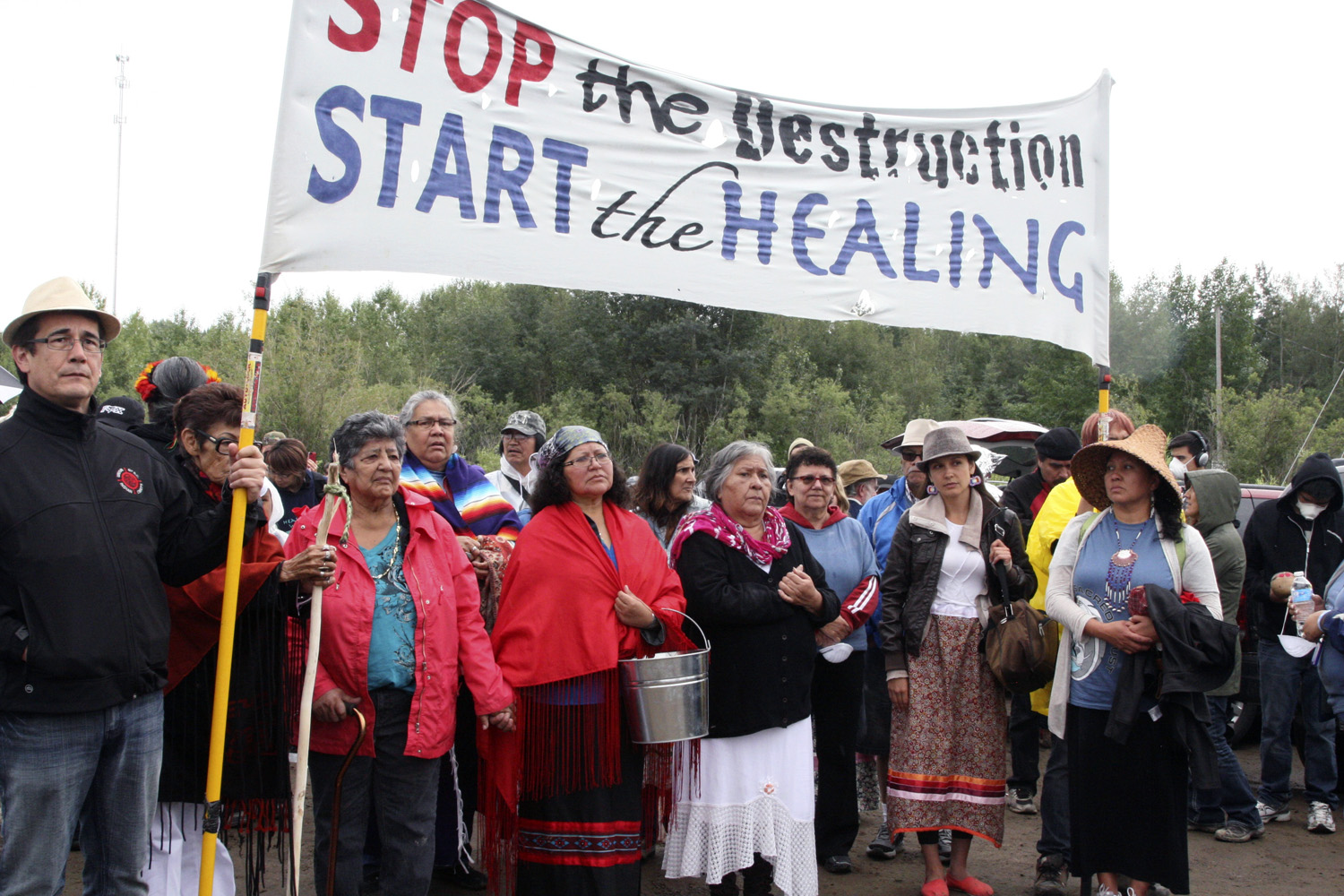 The UN’s Intergovernmental Panel on Climate Change (IPCC) has just published the first part of its latest seven-yearly Assessment Report (AR6) on global warming and its consequences (see video summary). The report was prepared by 234 scientists from 66 countries and endorsed by 195 governments. Its forecasts are stark. World temperatures, already 1.1C above pre-industrial levels, will continue to rise. This will bring further rises in sea levels and more extreme weather conditions with more droughts, floods, wildfires, hurricanes and glacial melting.
The UN’s Intergovernmental Panel on Climate Change (IPCC) has just published the first part of its latest seven-yearly Assessment Report (AR6) on global warming and its consequences (see video summary). The report was prepared by 234 scientists from 66 countries and endorsed by 195 governments. Its forecasts are stark. World temperatures, already 1.1C above pre-industrial levels, will continue to rise. This will bring further rises in sea levels and more extreme weather conditions with more droughts, floods, wildfires, hurricanes and glacial melting.
The IPCC looked at a number of scenarios with different levels of greenhouse gas emissions. Even in the most optimistic scenarios, where significant steps are taken to cut emissions, global warming is set to reach 1.5C by 2040. If few or no cuts are made, global warming is predicted to reach 4.4C by 2080, the effects of which would be catastrophic.
 The articles below go into considerable detail on the different scenarios and their consequences. Here we focus on the economic causes of the crisis and the policies that need to be pursued.
The articles below go into considerable detail on the different scenarios and their consequences. Here we focus on the economic causes of the crisis and the policies that need to be pursued.
Global success in reducing emissions, although partly dependent on technological developments and their impact on costs, will depend largely on the will of individuals, firms and governments to take action. These actions will be influenced by incentives, economic, social and political.
Economic causes of the climate emergency
The allocation of resources across the world is through a mixture of the market and government intervention, with the mix varying from country to country. But both market and government allocation suffer from a failure to meet social and environmental objectives – and such objectives change over time with the preferences of citizens and with the development of scientific knowledge.
 The market fails to achieve a socially efficient use of the environment because large parts of the environment are a common resource (such as the air and the oceans), because production or consumption often generates environmental externalities, because of ignorance of the environmental effects of our actions, and because of a lack of concern for future generations.
The market fails to achieve a socially efficient use of the environment because large parts of the environment are a common resource (such as the air and the oceans), because production or consumption often generates environmental externalities, because of ignorance of the environmental effects of our actions, and because of a lack of concern for future generations.
Governments fail because of the dominance of short-term objectives, such as winning the next election or appeasing a population which itself has short-term objectives related to the volume of current consumption. Governments are often reluctant to ask people to make sacrifices today for the future – a future when there will be a different government. What is more, government action on the environment which involves sacrifices from their own population, often primarily benefit people in other countries and/or future generations. This makes it harder for governments to get popular backing for such policies.
Economic systems are sub-optimal when there are perverse incentives, such as advertising persuading people to consume more despite its effects on the environment, or subsidies for industries producing negative environmental externalities. But if people can see the effects of global warming affecting their lives today, though fires, floods, droughts, hurricanes, rising sea levels, etc., they are more likely to be willing to take action today or for their governments to do so, even if it involves various sacrifices. Scientists, teachers, journalists and politicians can help to drive changes in public opinion through education and appealing to people’s concern for others and for future generations, including their own descendants.
Policy implications of the IPCC report
 At the COP26 meeting in Glasgow in November, countries will gather to make commitments to tackle climate change. The IPCC report is clear: although we are on course for a 1.5C rise in global temperatures by 2040, it is not too late to take action to prevent rises going much higher: to avoid the attendant damage to the planet and changes to weather systems, and the accompanying costs to lives and livelihoods. Carbon neutrality must be reached as soon as possible and this requires strong action now. It is not enough for government to set dates for achieving carbon neutrality, they must adopt policies that immediately begin reducing emissions.
At the COP26 meeting in Glasgow in November, countries will gather to make commitments to tackle climate change. The IPCC report is clear: although we are on course for a 1.5C rise in global temperatures by 2040, it is not too late to take action to prevent rises going much higher: to avoid the attendant damage to the planet and changes to weather systems, and the accompanying costs to lives and livelihoods. Carbon neutrality must be reached as soon as possible and this requires strong action now. It is not enough for government to set dates for achieving carbon neutrality, they must adopt policies that immediately begin reducing emissions.
The articles look at various policies that governments can adopt. They also look at actions that can be taken by people and businesses, actions that can be stimulated by government incentives and by social pressures. Examples include:
- A rapid phasing out of fossil fuel power stations. This may require legislation and/or the use of taxes on fossil fuel generation and subsidies for green energy.
- A rapid move to green transport, with investment in charging infrastructure for electric cars, subsidies for electric cars, a ban on new petrol and diesel vehicles in the near future, investment in hydrogen fuel cell technology for lorries and hydrogen production and infrastructure, cycle lanes and various incentives to cycle.
- A rapid shift away from gas for cooking and heating homes and workplaces and a move to ground source heating, solar panels and efficient electric heating combined with battery storage using electricity during the night. These again may require a mix of investment, legislation, taxes and subsidies.
- Improvements in energy efficiency, with better insulation of homes and workplaces.
- Education, public information and discussion in the media and with friends on ways in which people can reduce their carbon emissions. Things we can do include walking and cycling more, getting an electric car and reducing flying, eating less meat and dairy, reducing food waste, stopping using peat as compost, reducing heating in the home and putting on more clothes, installing better insulation and draught proofing, buying more second-hand products, repairing products where possible rather than replacing them, and so on.
- Governments requiring businesses to conduct and publish green audits and providing a range of incentives and regulations for businesses to reduce carbon emissions.
It is easy for governments to produce plans and to make long-term commitments that will fall on future governments to deliver. What is important is that radical measures are taken now. The problem is that governments are likely to face resistance from their supporters and from members of the public and various business who resist facing higher costs now. It is thus important that the pressures on governments to make radical and speedy reductions in emissions are greater than the pressures to do little or nothing and that governments are held to account for their actions and that their actions match their rhetoric.
Articles
 Some climate changes now irreversible, says stark UN report
Some climate changes now irreversible, says stark UN reportChannel 4 News, Alex Thomson (9/8/21)
- Climate change: IPCC report is ‘code red for humanity’
BBC News, Matt McGrath (10/8/21)
- Climate change: Five things we have learned from the IPCC report
BBC News, Matt McGrath (10/8/21)
- Climate Scientists Reach ‘Unequivocal’ Consensus on Human-Made Warming in Landmark Report
Bloomberg Green, Eric Roston and Akshat Rathi (9/8/21)
- Climate change: Seven key takeaways from the IPCC climate change report
Sky News, Philip Whiteside (10/8/21)
- IPCC report: global emissions must peak by 2025 to keep warming at 1.5°C – we need deeds not words
The Conversation, Keith Baker (9/8/21)
- This is the most sobering report card yet on climate change and Earth’s future. Here’s what you need to know
The Conversation, Pep Canadell, Joelle Gergis, Malte Meinshausen, Mark Hemer and Michael Grose (9/8/21)
- IPCC report: how to make global emissions peak and fall – and what’s stopping us
The Conversation, Matthew Paterson (9/8/21)
- World’s 1.5C goal slipping beyond reach without urgent action, warns landmark IPCC climate report
Independent, Daisy Dunne and Louise Boyle (9/8/21)
- IPCC report: 14 ways to fight the climate crisis after publication of ‘Code Red’ warning
Independent, Harry Cockburn (10/8/21)
- Major climate changes inevitable and irreversible – IPCC’s starkest warning yet
The Guardian, Fiona Harvey (9/8/21)
- Climate scientists have done their bit. Now the pressure is on leaders for COP26.
CNN, Ivana Kottasová and Angela Dewan (10/8/21)
- 21 For 21: The Climate Change Actions Scotland Needs Now
Common Weal, Common Weal Energy Policy Group (9/8/21)
- How to build support for ambitious climate action in 4 steps
The Conversation, Sarah Sharma and Matthew Hoffmann (4/3/21)
- Scientists have finally added world politics to their climate models
Quartz, Michael J Coren (9/8/21)
Report
Questions
- Summarise the effects of different levels of global warming as predicted by the IPCC report.
- To what extent is global warming an example of the ‘tragedy of the commons’?
- How could prices be affected by government policy so as to provide an incentive to reduce carbon emissions?
- What incentives could be put in place to encourage people to cut their own individual carbon footprint?
- To what extent is game theory relevant to understanding the difficulties of achieving international action on reducing carbon emissions?
- Identify four different measures that a government could adopt to reduce carbon emissions and assess the likely effectiveness of these measures.
 In a post at the end of 2019, we looked at moves around the world to introduce a four-day working week, with no increase in hours on the days worked and no reduction in weekly pay. Firms would gain if increased worker energy and motivation resulted in a gain in output. They would also gain if fewer hours resulted in lower costs.
In a post at the end of 2019, we looked at moves around the world to introduce a four-day working week, with no increase in hours on the days worked and no reduction in weekly pay. Firms would gain if increased worker energy and motivation resulted in a gain in output. They would also gain if fewer hours resulted in lower costs.
Workers would be likely to gain from less stress and burnout and a better work–life balance. What is more, firms’ and workers’ carbon footprint could be reduced.
In New Zealand, Unilever has begun a one-year experiment to allow all 81 of its employees to work one day less each week and no more hours per day. This, it argues, might boost productivity and improve employees’ work-life balance.
 The biggest experiment so far has been in Iceland. From 2015 to 2019 more than 2500 people took part in a pilot programme (about 1 per cent of Iceland’s working population). This involved reducing the working week to four days and reducing hours worked from 40 hours per week to 35 or 36 hours with no reduction in weekly pay.
The biggest experiment so far has been in Iceland. From 2015 to 2019 more than 2500 people took part in a pilot programme (about 1 per cent of Iceland’s working population). This involved reducing the working week to four days and reducing hours worked from 40 hours per week to 35 or 36 hours with no reduction in weekly pay.
Analysis of the results of the trial, published in July 2021, showed that output remained the same or improved in the majority of workplaces.
As a result of agreements struck with unions since the end of the pilot programme, 86% of Iceland’s workforce have either moved to shorter hours for the same pay or will gain the right to do so.
Many companies and public-sector employers around the world are considering reducing hours or days worked. With working patterns having changed for many employees during the pandemic, employers may now be more open to rethinking ways of deploying their workforce more productively. And this may involve rethinking worker motivation and welfare.
Articles
Report
Questions
- Distinguish between different ways of measuring labour productivity.
- Summarise the results of the Iceland pilot.
- In what ways may reducing working hours reduce a firm’s total costs?
- What are the advantages and disadvantages of the government imposing (at some point in the future) a maximum working week or a four-day week?
- What types of firm might struggle in introducing a four-day week or a substantially reduced number of hours for full-time employees?
- What external benefits and costs might arise from a shorter working week?
 In his March 2021 Budget, Rishi Sunak announced the setting up of eight freeports in England. These will be East Midlands Airport, Felixstowe & Harwich, Humber, Liverpool City Region, Plymouth and South Devon, Solent, Teesside and Thames. The locations were chosen after a bidding process. Some 30 areas applied and they were judged on various criteria, including economic benefits to poorer regions. Other freeports are due to be announced in Scotland, Wales and Northern Ireland. The Scottish government is stressing their contribution to the green agenda and will call them ‘green ports’.
In his March 2021 Budget, Rishi Sunak announced the setting up of eight freeports in England. These will be East Midlands Airport, Felixstowe & Harwich, Humber, Liverpool City Region, Plymouth and South Devon, Solent, Teesside and Thames. The locations were chosen after a bidding process. Some 30 areas applied and they were judged on various criteria, including economic benefits to poorer regions. Other freeports are due to be announced in Scotland, Wales and Northern Ireland. The Scottish government is stressing their contribution to the green agenda and will call them ‘green ports’.
Unlike many countries, the UK in recent years chose not to have freeports. There are currently around 3500 freeports worldwide, There are around 80 in the EU, including the whole or part of Barcelona, Port of Bordeaux, Bremerhaven, Cadiz, Copenhagen, Gdansk, Luxembourg, Madeira, Malta, Plovdiv, Piraeus, Riga, Split, Trieste, Venice and Zagreb. The UK had freeports at Liverpool, Southampton, the Port of Tilbury, the Port of Sheerness and Prestwick Airport from 1984, but the government allowed their status to lapse in 2012.
 Freeports are treated as ‘offshore’ areas, with goods being allowed into the areas tariff free. This enables raw materials and parts to be imported and made into finished or semi-finished products within the freeport area. At that stage they can either be imported to the rest of the country, at which point tariffs are applied, or they can be exported with no tariff being applied by the exporting country, only the receiving country as appropriate. This benefits companies within the freeport area as it simplifies the tariff system.
Freeports are treated as ‘offshore’ areas, with goods being allowed into the areas tariff free. This enables raw materials and parts to be imported and made into finished or semi-finished products within the freeport area. At that stage they can either be imported to the rest of the country, at which point tariffs are applied, or they can be exported with no tariff being applied by the exporting country, only the receiving country as appropriate. This benefits companies within the freeport area as it simplifies the tariff system.
The new English freeports will provide additional benefits to companies, including reduced employers’ national insurance payments, reduced property taxes for newly acquired and existing land and buildings, 100% capital allowances whereby the full cost of investment in plant and machinery can be offset against taxable profits, and full business-rates relief for five years (see paragraph 2.115 in Budget 2021).
Benefits and costs
Freeport status will benefit the chosen areas, as it is likely to attract inward investment and provide employment. Many areas were thus keen to bid for freeport status. To the extent that there is a net increase in investment for the country, this will contribute to GDP growth.
But there is the question of how much net additional investment there will be. Critics argue that freeports can divert investment from areas without such status. Also, to the extent that investment is diverted rather than being new investment, this will reduce tax revenue to the government.
 Then there is the question of whether such areas are in breach of international agreements. WTO rules forbid countries from directly subsidising exports. And the Brexit trade deal requires subsidies to be justified for reasons other than giving a trade advantage. If the UK failed to do so, the EU could impose tariffs on such goods to prevent unfair competition.
Then there is the question of whether such areas are in breach of international agreements. WTO rules forbid countries from directly subsidising exports. And the Brexit trade deal requires subsidies to be justified for reasons other than giving a trade advantage. If the UK failed to do so, the EU could impose tariffs on such goods to prevent unfair competition.
Also, there is the danger of tax evasion, money laundering and corruption encouraged by an absence of regulations and checks. Tight controls and thorough auditing by the government and local authorities will be necessary to counter this and prevent criminal activity and profits going abroad. Worried about these downsides of freeports, in January 2020 the EU tightened regulations governing freeports and took extra measures to clamp down on the growing level of corruption, tax evasion and criminal activity.
Articles
 Back in November, when Joe Biden had just been elected, we considered some of his proposed policies to tackle climate change (see A new era for climate change policy?). On 20th January, the day of his inauguration, he signed 17 executive orders overturning a range of policies of the Trump presidency. Further executive orders followed. Some of these related directly to climate change.
Back in November, when Joe Biden had just been elected, we considered some of his proposed policies to tackle climate change (see A new era for climate change policy?). On 20th January, the day of his inauguration, he signed 17 executive orders overturning a range of policies of the Trump presidency. Further executive orders followed. Some of these related directly to climate change.
The first was to cancel the Keystone XL oil pipeline project. If it had gone ahead, it would have transported 830 000 barrels of oil per day from the Alberta tar sands in Canada to refineries on the Gulf Coast of Texas. It would have involved building a new pipeline from Alberta to Nebraska, where it would have linked to an existing pipeline to Texas. Extracting oil from tar sands is a particularly dirty process, involves cutting down large areas of forest (a carbon sink) and total emissions are around 20% greater per barrel than from conventional crude.
 The pipeline would have cut across First Nations land and any spills would have been highly toxic to the local environment. In terms of profitability, returns on tar sands oil extraction and transportation are very low. This is likely to remain the case as oil prices are likely to remain low, with greater global energy efficiency and the switch to renewables.
The pipeline would have cut across First Nations land and any spills would have been highly toxic to the local environment. In terms of profitability, returns on tar sands oil extraction and transportation are very low. This is likely to remain the case as oil prices are likely to remain low, with greater global energy efficiency and the switch to renewables.
Critics of Biden’s decision argue that the pipeline project would have created some 5000 to 6000 temporary jobs in the USA during the two-year construction phase. Also they claim that it would have contributed to greater energy security for the USA.
 The second executive order was to rejoin the Paris Climate Agreement, a process that will take 30 days. Rejoining will involve commitments to cut greenhouse gas emissions and the adoption of various measures to bring this about. During the election campaign, Biden pledged to achieve economy-wide net-zero emissions no later than 2050. As we saw in the previous blog, under Biden the USA will play a leading role in the November 2021 UN COP26 climate change conference in Glasgow.
The second executive order was to rejoin the Paris Climate Agreement, a process that will take 30 days. Rejoining will involve commitments to cut greenhouse gas emissions and the adoption of various measures to bring this about. During the election campaign, Biden pledged to achieve economy-wide net-zero emissions no later than 2050. As we saw in the previous blog, under Biden the USA will play a leading role in the November 2021 UN COP26 climate change conference in Glasgow.
At present, the Paris agreement is for countries to aim to reach a peak of greenhouse gas emissions as soon as possible to achieve a climate neutral world by mid-century. Many countries have have made commitments about when they aim to achieve carbon neutrality, although concrete action is much more limited. It is hoped that the COP26 conference will lead to stronger commitments and actions and that the USA under Biden will play a leading part in driving this forward.
 In addition, to cancelling the Keystone XL pipeline and rejoining the Paris Agreement, the executive orders reversed more than 100 other decisions with negative environmental effects taken by the Trump administration – many overturning environmental measures introduced by previous administrations, especially the Obama administration.
In addition, to cancelling the Keystone XL pipeline and rejoining the Paris Agreement, the executive orders reversed more than 100 other decisions with negative environmental effects taken by the Trump administration – many overturning environmental measures introduced by previous administrations, especially the Obama administration.
These orders included reversing the easing of vehicle emissions standards; stopping reductions in the area of two major national monuments (parks) in Utah; enforcing a temporary moratorium on oil and natural gas leases in Alaska’s Arctic National Wildlife Refuge; and re-establishing a working group on the social costs of greenhouse gasses.
Then there will be new measures, such as adopting strict fuel economy standards and investment in clean public transport. But it remains to be seen how far and fast the Biden administration can move to green the US economy. With the desire for bipartisanship and seeking an end to the divisive policies of Trump, there may be limits to what the new President can achieve in terms of new legislation, especially with a Senate divided 50:50 and only the casting vote of the chair (Kamala Harris as Vice-President) being in Democrat hands.
The articles below consider the various green policies and how likely they are to succeed in their objectives.
Articles
- Climate change: Biden’s first act sets tone for ambitious approach
BBC News, Matt McGrath (20/1/21)
- Biden nixes Keystone XL permit, halts Arctic refuge leasing
The Hill, Rachel Frazin (20/1/21)
- Biden’s return to Paris pact just a first step for U.S. climate action
Reuters, Megan Rowling (20/1/21)
- Court Decision Lets Biden Set New Emissions Rules To Meet Paris Agreement Climate Goals
Forbes, Allan Marks (20/1/21)
- Biden to ‘hit ground running’ as he rejoins Paris climate accords
The Guardian, Oliver Milman (19/1/21)
- What could a Biden-Harris administration mean for the planet?
Euronews, Marthe de Ferrer (20/1/21)
- Ask a Scientist: What Should the Biden Administration and Congress Do to Address the Climate Crisis?
ecoWatch, Elliott Negin (18/1/21)
- Biden marks Day One with burst of orders reversing Trump policies on climate and health
Science Business, Éanna Kelly (21/1/21)
- What Is the Paris Climate Agreement That Joe Biden Will Rejoin, Why Did Donald Trump Leave?
Newsweek, Kashmira Gander (18/1/21)
Questions
- Find out what other environmental policies are being pursued by President Biden and assess their likely effectiveness in achieving their environmental objectives.
- Would policies to reduce carbon emissions necessarily be desirable? How would you assess their desirability?
- When is it best to use the ‘precautionary principle’ when devising environmental policies?
- To what extent is game theory relevant in understanding the difficulties and opportunities of developing internationally agreed policies on carbon reduction?
- If the objective is to tackle global warming, is it better to seek international agreement on limiting the extent of global warming or international agreement on carbon reduction? Explain.

With the election of Joe Biden, the USA will have a president committed to tackling climate change. This is in stark contrast to Donald Trump, who has been publicly sceptical about the link between human action and climate change and has actively supported the coal, oil and gas industries and has rolled back environmental protection legislation and regulation.
 What is more, in June 2017, he announced that the USA would withdraw from the UN Paris Accord, the international agreement to cut greenhouse gas emissions so as to limit global warming to ‘well below’ 2°C above pre-industrial levels with efforts to limit it to 1.5°C. The USA’s withdrawal was finalised on 4 November 2020, a day after the US election. Joe Biden, however, pledged to rejoin the accord.
What is more, in June 2017, he announced that the USA would withdraw from the UN Paris Accord, the international agreement to cut greenhouse gas emissions so as to limit global warming to ‘well below’ 2°C above pre-industrial levels with efforts to limit it to 1.5°C. The USA’s withdrawal was finalised on 4 November 2020, a day after the US election. Joe Biden, however, pledged to rejoin the accord.
A growing number of countries are pledging to achieve carbon neutrality by mid-century or earlier. The EU is planning to achieve a 55% cut in greenhouse gas emissions by 2030 so as to reach neutrality by 2050. This will involve various taxes, subsidies and public investment. Similar pledges to achieve net zero emissions by 2050 have been made by Japan and South Korea and by 2060 by China. In the UK, legislation was passed requiring the government to reduce the UK’s net emissions 100% relative to 1990 levels by 2050 and thereby achieve net zero emissions.
Constraints on action
Short-termism. One of the problems with setting targets a long time in the future is that they take away the urgency to act now. There are huge time lags between introducing policies to curb carbon emissions and their impact on the climate. The costs of such policies for business and consumers, however, are felt immediately in terms of higher taxes and/or higher prices. Thus politicians may be quick to make long-term pledges but reluctant to take firm measures today. Instead they may prefer to appease various pressure groups, such as motoring organisations, and cut fuel taxes, or, at least, not raise them. Politically, then, it may be easier to focus policy on the short term and just make pledges without action for the future.
Externalities. Various activities that cause carbon emissions, whether directly, such as heavy industry, dairy farming, aviation and shipping, or indirectly, such as oil and coal production, thereby impose environmental costs on society, both at home and abroad. These costs are negative externalities and, by their nature, are not borne by those who produce them. There are often powerful lobbies objecting to any attempt to internalise these externalities through taxes, subsidising green alternatives or regulation. Take the case of the USA. Fossil fuel producers, energy-intensive industries and farmers all claim that green policies will damage their businesses, leading to a loss of profits and jobs. These groups were courted by Donald Trump.

International competition. Countries may well be reluctant to impose green taxes or tough environmental regulation on producers, when competitors abroad do not face such constraints. Indeed, some countries are actively promoting dirty industries as part of their policies to stimulate economic recovery from the Covid-induced recession. Such countries include China, Russia and Turkey. This again was a major argument used in the Trump campaign that US industries should not be hobbled by environmental constraints but should be free to compete.
Misinformation. Politicians, knowing that taking tough environmental measures will be unpopular with large numbers of people, may well downplay the dangers of inaction. Some, such as Trump in America and Bolsonaro in Brazil deliberately appeal to climate change deniers or say that technology will sort things out. This makes it hard for other politicians to promote green policies, knowing that they will face scepticism about the science and the efficacy of their proposed policies.
Biden’s climate change policy
 Although it will be difficult to persuade some Americans of the need for tougher policies to tackle climate change, Joe Biden has already made a number of pledges. He has stated that under his administration, the USA will rejoin the Paris Climate Agreement and will play a leading role in the November 2021 UN COP26 climate change conference summit in Glasgow. He has also pledged a Clean Energy Revolution to put the USA on an ‘irreversible path to achieve economy-wide net-zero emissions no later than 2050’.
Although it will be difficult to persuade some Americans of the need for tougher policies to tackle climate change, Joe Biden has already made a number of pledges. He has stated that under his administration, the USA will rejoin the Paris Climate Agreement and will play a leading role in the November 2021 UN COP26 climate change conference summit in Glasgow. He has also pledged a Clean Energy Revolution to put the USA on an ‘irreversible path to achieve economy-wide net-zero emissions no later than 2050’.
But readopting the pledges under the Paris Agreement and advocating a clean energy revolution are not enough on their own. Specific measures will need to be taken. So, what can be done that is practical and likely to meet with the approval of the majority of Americans or, at least, of Biden’s supporters?
For a start, he can reintroduce many of the regulations that were overturned by the Trump administration, such as preventing oil and gas companies from flaring methane on public lands. He could introduce funding for the development of green technology. He could require public buildings to use green energy.
According to the Clean Energy Revolution, the US government will develop ‘rigorous new fuel economy standards aimed at ensuring 100% of new sales for light- and medium-duty vehicles will be zero emissions and annual improvements for heavy duty vehicles’.
 One of the biggest commitments is to tackle external costs directly by enacting ‘legislation requiring polluters to bear the full cost of their climate pollution’. This may be met with considerable resistance from US corporations. It is thus politically important for Biden to stress the short-term benefits of his policies, not just the long-term ones.
One of the biggest commitments is to tackle external costs directly by enacting ‘legislation requiring polluters to bear the full cost of their climate pollution’. This may be met with considerable resistance from US corporations. It is thus politically important for Biden to stress the short-term benefits of his policies, not just the long-term ones.
Given the damage done to the economy by the spread of the pandemic, perhaps the main thing that Biden can do to persuade people of the benefits to them of his policies is to focus on green investment and green jobs. Building a green energy infrastructure of wind, solar and hydro and investing in zero-emissions vehicles and charging infrastructure will provide jobs and lead to multiplier effects throughout the economy.
Articles
- Trump Administration Removes Scientist in Charge of Assessing Climate Change
The New York Times, Christopher Flavelle, Lisa Friedman and Coral Davenport (9/11/20)
- As U.S. leaves Paris accord, climate policy hangs on election outcome
The Washington Post, Brady Dennis, Juliet Eilperin and Dino Grandoni (5/11/20)
- Where next for US action on Climate Change?
British Foreign Policy Group, Evie Aspinall (11/11/20)
- Media reaction: What Joe Biden’s US election victory means for climate change
Carbon Brief, Josh Gabbatiss (10/11/20)
- Joe Biden: How the president-elect plans to tackle climate change
BBC News, Matt McGrath (10/11/20)
- Biden victory ushers in ‘race to the top’ on climate change
Lexology, Baker McKenzie, David P Hackett and Ilona Millar (13/11/20)
- Climate heroes: the countries pioneering a green future
The Guardian, Jonathan Watts (11/11/20)
- ‘Hypocrites and greenwash’: Greta Thunberg blasts leaders over climate crisis
The Guardian, Damian Carrington (9/11/20)
- Five post-Trump obstacles to a global green recovery
The Guardian, Jonathan Watts (11/11/20)
- Biden’s climate change plans can quickly raise the bar, but can they be transformative?
The Conversation, Edward R Carr (10/11/20)
- Jana Shea/Shutterstock Climate change: Joe Biden could ride a wave of international momentum to break deadlock in US
The Conversation, Richard Beardsworth and Olaf Corry (10/11/20)
- Climate change after COVID-19: Harder to defeat politically, easier to tackle economically
VoxEU, Franziska Funke and David Klenert (17/8/20)
Questions
- Identify three specific climate change policies of Joe Biden and assess whether each one is likely to succeed.
- Draw a diagram to illustrate why a free market will lead to over production of a good which produces negative externalities.
- To what extent can education internalise the positive externalities of green consumption and production?
- What was agreed at the Paris climate change conference in December 2015 and what mechanisms were put in place to incentivise countries to meet the targets?
- Will the coronavirus pandemic have had any lasting effects on emissions? Explain.
- How may carbon trading lead to a reduction in carbon emissions? What determines the size of such reductions?
 The UN’s Intergovernmental Panel on Climate Change (IPCC) has just published the first part of its latest seven-yearly Assessment Report (AR6) on global warming and its consequences (see video summary). The report was prepared by 234 scientists from 66 countries and endorsed by 195 governments. Its forecasts are stark. World temperatures, already 1.1C above pre-industrial levels, will continue to rise. This will bring further rises in sea levels and more extreme weather conditions with more droughts, floods, wildfires, hurricanes and glacial melting.
The UN’s Intergovernmental Panel on Climate Change (IPCC) has just published the first part of its latest seven-yearly Assessment Report (AR6) on global warming and its consequences (see video summary). The report was prepared by 234 scientists from 66 countries and endorsed by 195 governments. Its forecasts are stark. World temperatures, already 1.1C above pre-industrial levels, will continue to rise. This will bring further rises in sea levels and more extreme weather conditions with more droughts, floods, wildfires, hurricanes and glacial melting. The articles below go into considerable detail on the different scenarios and their consequences. Here we focus on the economic causes of the crisis and the policies that need to be pursued.
The articles below go into considerable detail on the different scenarios and their consequences. Here we focus on the economic causes of the crisis and the policies that need to be pursued.  The market fails to achieve a socially efficient use of the environment because large parts of the environment are a common resource (such as the air and the oceans), because production or consumption often generates environmental externalities, because of ignorance of the environmental effects of our actions, and because of a lack of concern for future generations.
The market fails to achieve a socially efficient use of the environment because large parts of the environment are a common resource (such as the air and the oceans), because production or consumption often generates environmental externalities, because of ignorance of the environmental effects of our actions, and because of a lack of concern for future generations. At the COP26 meeting in Glasgow in November, countries will gather to make commitments to tackle climate change. The IPCC report is clear: although we are on course for a 1.5C rise in global temperatures by 2040, it is not too late to take action to prevent rises going much higher: to avoid the attendant damage to the planet and changes to weather systems, and the accompanying costs to lives and livelihoods. Carbon neutrality must be reached as soon as possible and this requires strong action now. It is not enough for government to set dates for achieving carbon neutrality, they must adopt policies that immediately begin reducing emissions.
At the COP26 meeting in Glasgow in November, countries will gather to make commitments to tackle climate change. The IPCC report is clear: although we are on course for a 1.5C rise in global temperatures by 2040, it is not too late to take action to prevent rises going much higher: to avoid the attendant damage to the planet and changes to weather systems, and the accompanying costs to lives and livelihoods. Carbon neutrality must be reached as soon as possible and this requires strong action now. It is not enough for government to set dates for achieving carbon neutrality, they must adopt policies that immediately begin reducing emissions. Some climate changes now irreversible, says stark UN report
Some climate changes now irreversible, says stark UN report In
In  The biggest experiment so far has been in Iceland. From 2015 to 2019 more than 2500 people took part in a pilot programme (about 1 per cent of Iceland’s working population). This involved reducing the working week to four days and reducing hours worked from 40 hours per week to 35 or 36 hours with no reduction in weekly pay.
The biggest experiment so far has been in Iceland. From 2015 to 2019 more than 2500 people took part in a pilot programme (about 1 per cent of Iceland’s working population). This involved reducing the working week to four days and reducing hours worked from 40 hours per week to 35 or 36 hours with no reduction in weekly pay.  In his March 2021 Budget, Rishi Sunak announced the setting up of eight freeports in England. These will be East Midlands Airport, Felixstowe & Harwich, Humber, Liverpool City Region, Plymouth and South Devon, Solent, Teesside and Thames. The locations were chosen after a bidding process. Some 30 areas applied and they were judged on various criteria, including economic benefits to poorer regions. Other freeports are due to be announced in Scotland, Wales and Northern Ireland. The Scottish government
In his March 2021 Budget, Rishi Sunak announced the setting up of eight freeports in England. These will be East Midlands Airport, Felixstowe & Harwich, Humber, Liverpool City Region, Plymouth and South Devon, Solent, Teesside and Thames. The locations were chosen after a bidding process. Some 30 areas applied and they were judged on various criteria, including economic benefits to poorer regions. Other freeports are due to be announced in Scotland, Wales and Northern Ireland. The Scottish government  Freeports are treated as ‘offshore’ areas, with goods being allowed into the areas tariff free. This enables raw materials and parts to be imported and made into finished or semi-finished products within the freeport area. At that stage they can either be imported to the rest of the country, at which point tariffs are applied, or they can be exported with no tariff being applied by the exporting country, only the receiving country as appropriate. This benefits companies within the freeport area as it simplifies the tariff system.
Freeports are treated as ‘offshore’ areas, with goods being allowed into the areas tariff free. This enables raw materials and parts to be imported and made into finished or semi-finished products within the freeport area. At that stage they can either be imported to the rest of the country, at which point tariffs are applied, or they can be exported with no tariff being applied by the exporting country, only the receiving country as appropriate. This benefits companies within the freeport area as it simplifies the tariff system. Then there is the question of whether such areas are in breach of international agreements. WTO rules forbid countries from directly subsidising exports. And the Brexit trade deal requires subsidies to be justified for reasons other than giving a trade advantage. If the UK failed to do so, the EU could impose tariffs on such goods to prevent unfair competition.
Then there is the question of whether such areas are in breach of international agreements. WTO rules forbid countries from directly subsidising exports. And the Brexit trade deal requires subsidies to be justified for reasons other than giving a trade advantage. If the UK failed to do so, the EU could impose tariffs on such goods to prevent unfair competition. Back in November, when Joe Biden had just been elected, we considered some of his proposed policies to tackle climate change (see
Back in November, when Joe Biden had just been elected, we considered some of his proposed policies to tackle climate change (see  The pipeline would have cut across First Nations land and any spills would have been highly toxic to the local environment. In terms of profitability, returns on tar sands oil extraction and transportation are very low. This is likely to remain the case as oil prices are likely to remain low, with greater global energy efficiency and the switch to renewables.
The pipeline would have cut across First Nations land and any spills would have been highly toxic to the local environment. In terms of profitability, returns on tar sands oil extraction and transportation are very low. This is likely to remain the case as oil prices are likely to remain low, with greater global energy efficiency and the switch to renewables.  The second executive order was to rejoin the
The second executive order was to rejoin the  In addition, to cancelling the Keystone XL pipeline and rejoining the Paris Agreement, the executive orders reversed more than 100 other decisions with negative environmental effects taken by the Trump administration – many overturning environmental measures introduced by previous administrations, especially the Obama administration.
In addition, to cancelling the Keystone XL pipeline and rejoining the Paris Agreement, the executive orders reversed more than 100 other decisions with negative environmental effects taken by the Trump administration – many overturning environmental measures introduced by previous administrations, especially the Obama administration. 
 What is more, in June 2017, he announced that
What is more, in June 2017, he announced that 
 Although it will be difficult to persuade some Americans of the need for tougher policies to tackle climate change, Joe Biden has already made a number of pledges. He has stated that under his administration, the USA will
Although it will be difficult to persuade some Americans of the need for tougher policies to tackle climate change, Joe Biden has already made a number of pledges. He has stated that under his administration, the USA will  One of the biggest commitments is to tackle external costs directly by enacting ‘legislation requiring polluters to bear the full cost of their climate pollution’. This may be met with considerable resistance from US corporations. It is thus politically important for Biden to stress the short-term benefits of his policies, not just the long-term ones.
One of the biggest commitments is to tackle external costs directly by enacting ‘legislation requiring polluters to bear the full cost of their climate pollution’. This may be met with considerable resistance from US corporations. It is thus politically important for Biden to stress the short-term benefits of his policies, not just the long-term ones.